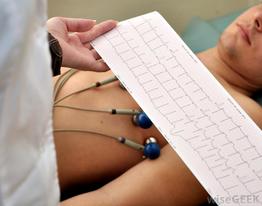For as long as humans have lived, the why and how of our heartbeats have puzzled scientists , researchers, and medical men. About 400 hundred years ago, William Gilbert, physician to Queen Elizabeth the First of England, introduced the term "electra" to the mysterious force that caused and regulated the heartbeat.
Fast forward to the present day when sophisticated electrocardiograms are an invaluable clinical tool. Over the centuries, many, many physicians, scientists and inventors have built on one another's discoveries to develop this machine that we take for granted today.
The first recorded electrocardiogram was taken in 1817, and by 1905, Willem Einhoven of Germany was able to transmit ECG results over a telephone cable. In 1911, Thomas lewis published his classic textbook, "The Mechanism of the Heartbeat". By 1913 the ECG had become an important diagnostic tool in the hands of an American physician, Dr, Paul Dudley White, and in the 1920's, Einhoven won a Noble prize for his work in developing the electrocardiogram much as we know it today. A related device, the pacemaker, was developed in 1926. It is interesting to note that it was a very controversial invention at the time, opposed by some on religious grounds as its use extended human life.
In 1949, a portable ECG machine called the Holter monitor was invented. In its initial version it weighd 76 pounds.
Fast forward to the present day when sophisticated electrocardiograms are an invaluable clinical tool. Over the centuries, many, many physicians, scientists and inventors have built on one another's discoveries to develop this machine that we take for granted today.
The first recorded electrocardiogram was taken in 1817, and by 1905, Willem Einhoven of Germany was able to transmit ECG results over a telephone cable. In 1911, Thomas lewis published his classic textbook, "The Mechanism of the Heartbeat". By 1913 the ECG had become an important diagnostic tool in the hands of an American physician, Dr, Paul Dudley White, and in the 1920's, Einhoven won a Noble prize for his work in developing the electrocardiogram much as we know it today. A related device, the pacemaker, was developed in 1926. It is interesting to note that it was a very controversial invention at the time, opposed by some on religious grounds as its use extended human life.
In 1949, a portable ECG machine called the Holter monitor was invented. In its initial version it weighd 76 pounds.


 RSS Feed
RSS Feed
